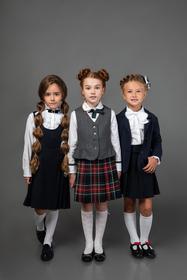Poplar Bluff High School is a public high school in Poplar Bluff, Missouri, United States. It is a part of the Poplar Bluff R-1 School District.
Serving 1,459 students in grades 9-12, Poplar Bluff High School ranks in the bottom 50% of all schools in Missouri for overall test scores (math proficiency is bottom 50%, and reading proficiency is bottom 50%).
The percentage of students achieving proficiency in math is 32% (which is lower than the Missouri state average of 40%). The percentage of students achieving proficiency in reading/language arts is 45% (which is higher than the Missouri state average of 43%).
The student-teacher ratio of 16:1 is higher than the Missouri state level of 12:1.
Minority enrollment is 23% of the student body (majority Black), which is lower than the Missouri state average of 32% (majority Black).
Quick Facts (2025-26)
- Grades: 9-12
- Enrollment: 1,459 students
- Student-Teacher Ratio: 16:1
- Minority Enrollment: 23%
- Graduation Rate: 92% (Top 20% in MO)
- Overall Testing Rank: Bottom 50%
- Math Proficiency: 32% (Btm 50%)
- Reading Proficiency: 45% (Top 50%)
- Science Proficiency: 27% (Btm 50%)
- Source: National Center for Education Statistics (NCES), MO Dept. of Education
Top Rankings
Poplar Bluff High School ranks among the top 20% of public schools in Missouri for:
Category
Attribute
Graduation Rate
School Overview
Poplar Bluff High School's student population of 1,459 students has stayed relatively flat over five school years.
The teacher population of 91 teachers has grown by 13% over five school years.
Grades Offered
Grades 9-12
(No virtual instruction)
(No virtual instruction)
Total Students
1,459 students
Gender %
Total Classroom Teachers
91 teachers
School Calendar
School Rankings
Poplar Bluff High School ranks within the bottom 50% of all 2,076 schools in Missouri (based off of combined math and reading proficiency testing data).
The diversity score of Poplar Bluff High School is 0.39, which is less than the diversity score at state average of 0.51. The school's diversity has stayed relatively flat over five school years.
Overall Testing Rank
#1150 out of 2076 schools
(Bottom 50%)
(Bottom 50%)
Math Test Scores (% Proficient)
32%
40%
Reading/Language Arts Test Scores (% Proficient)
45%
43%
Science Test Scores (% Proficient)
27%
38%
Student-Teacher Ratio
16:1
12:1
American Indian
n/a
n/a
Asian
1%
2%
Hispanic
4%
8%
Black
11%
15%
White
77%
68%
Hawaiian
n/a
1%
Two or more races
7%
6%
All Ethnic Groups
Graduation Rate
92%
90%
Eligible for Free Lunch
47%
42%
Eligible for Reduced Lunch
10%
7%
School Statewide Testing
School District Name
Source: National Center for Education Statistics (NCES), MO Dept. of Education
Profile last updated: 02/09/2025
Frequently Asked Questions
What is Poplar Bluff High School's ranking?
Poplar Bluff High School is ranked #1150 out of 2,076 schools, which ranks it among the bottom 50% of public schools in Missouri.
What schools are Poplar Bluff High School often compared to?
Poplar Bluff High Schoolis often viewed alongside schools like Twin Rivers High School, Neelyville High School, W. E. Sears Youth Center by visitors of our site.
What percent of students have achieved state testing proficiency in math and reading?
32% of students have achieved math proficiency (compared to the 40% MO state average), while 45% of students have achieved reading proficiency (compared to the 43% MO state average).
What is the graduation rate of Poplar Bluff High School?
The graduation rate of Poplar Bluff High School is 92%, which is higher than the Missouri state average of 90%.
How many students attend Poplar Bluff High School?
1,459 students attend Poplar Bluff High School.
What is the racial composition of the student body?
77% of Poplar Bluff High School students are White, 11% of students are Black, 7% of students are Two or more races, 4% of students are Hispanic, and 1% of students are Asian.
What is the student-teacher ratio of Poplar Bluff High School?
Poplar Bluff High School has a student ration of 16:1, which is higher than the Missouri state average of 12:1.
What grades does Poplar Bluff High School offer ?
Poplar Bluff High School offers enrollment in grades 9-12 (No virtual instruction).
What school district is Poplar Bluff High School part of?
Poplar Bluff High School is part of Poplar Bluff R-I School District.
School Reviews
1 10/10/2025
Some teachers my child has at this school barely give them any attention or help. The friendliness of the teachers and staff are very rude. My student comes home every day and complains that the food is horrible and they will never eat nasty food. I would've given this school no stars but it would not let me.
2 10/10/2025
5-6 grade teachers hold degrees however many are not competent to teach. Since the implementation of the Mac book system teachers rarely teach and leave the students to figure it out on their own in the upper grade levels. School is located in a high property tax area and unfortunately the tax money obviously is not being spent on students education when the few textbooks that are used are 20+ years old.
Review Poplar Bluff High School. Reviews should be a few sentences in length. Please include any comments on:
- Quality of academic programs, teachers, and facilities
- Availability of music, art, sports and other extracurricular activities
Recent Articles

School Vouchers: Updated Pros and Cons (2025 Review)
Comprehensive 2025 analysis of school vouchers, weighing benefits and challenges for families, funding, outcomes, and policy directions.

Benefits and Drawbacks of Homework in 2025
Explore updated 2025 insights on homework’s benefits, drawbacks, mental health impact, best practices, and policy trends in U.S. public schools.

Charter Schools vs Public Schools 2025: Key Differences & Trends
Explore updated 2025 insights comparing charter schools vs public schools, enrollment, academic outcomes, funding, and real-world examples for families and educators.





